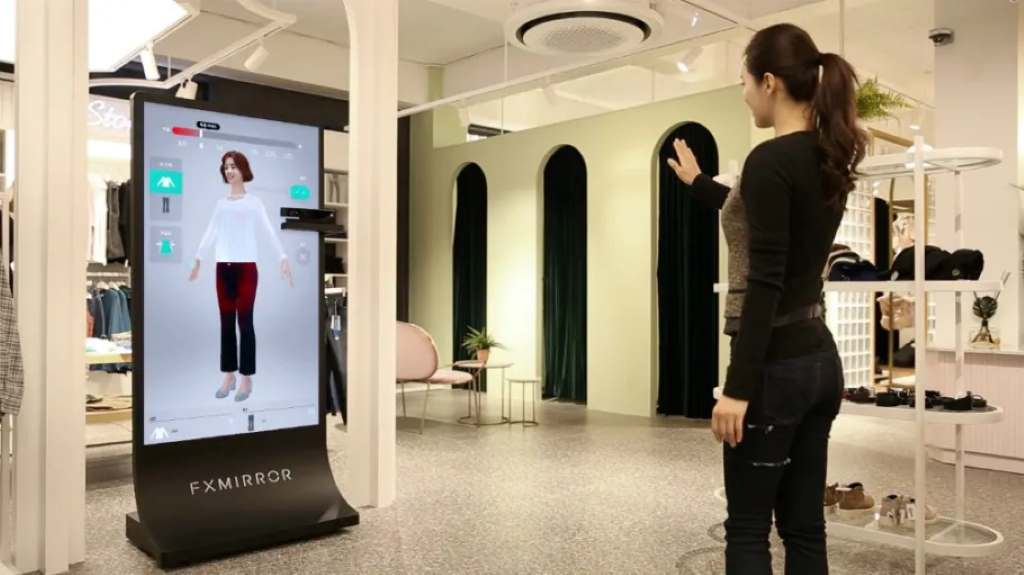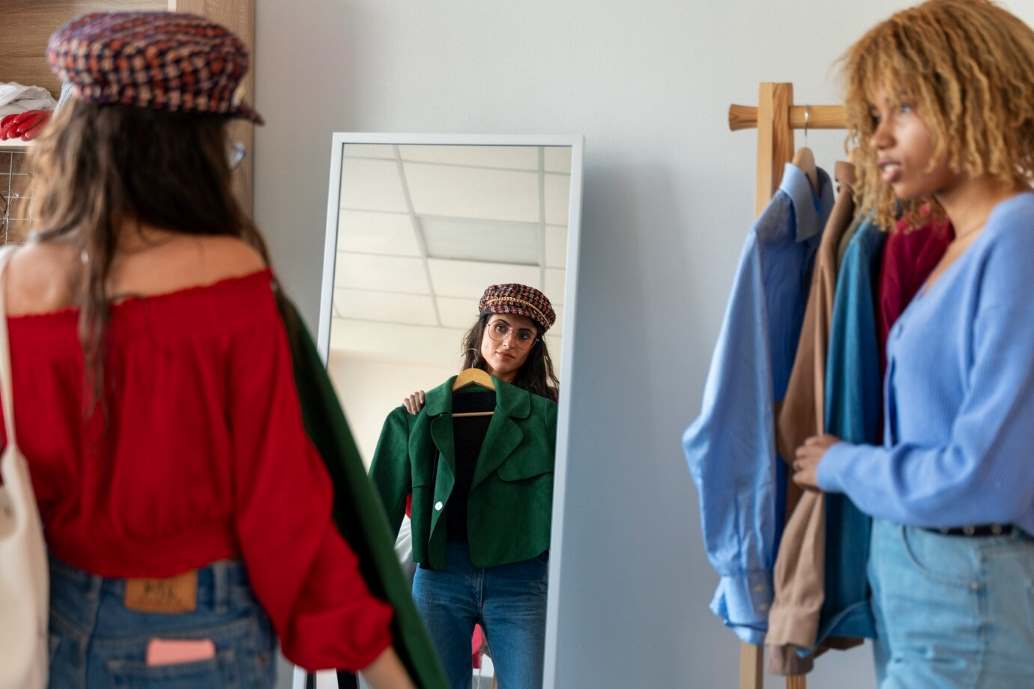Imagine standing in front of a mirror, trying on a dozen outfits without changing clothes. That’s the magic of smart mirrors for virtual fashion try-ons. These high-tech wonders blend augmented reality (AR) with sleek design, transforming how we shop. I first encountered one at a boutique in Chicago, and it felt like stepping into a sci-fi movie. With a tap, I “wore” a dress, swapped colors, and even checked how it looked with heels—all without a dressing room. This blog post dives into the world of smart mirrors, sharing their benefits, technology, and why they’re reshaping retail. Whether you’re a fashion enthusiast or a curious shopper, you’ll discover how these mirrors make shopping fun, fast, and futuristic. Let’s explore this game-changer together.
What Are Smart Mirrors for Virtual Fashion Try-Ons?
Smart mirrors are interactive screens that use AR and cameras to overlay digital clothing onto your reflection. They act like regular mirrors but with a digital twist, letting you “try on” outfits virtually. The technology scans your body, maps your measurements, and displays garments in real-time, adjusting for fit and movement. Some even suggest accessories or show how clothes look in different lighting.
I was skeptical when I first saw one. Could a screen really mimic a real try-on? But after testing a smart mirror at a mall, I was hooked. It saved me from wrestling with zippers in a cramped fitting room. According to a 2023 study by Statista, 35% of shoppers prefer virtual try-ons for convenience, proving their growing appeal. Retailers like Nordstrom and Zara are adopting them, linking to apps for seamless purchases. However, the tech isn’t perfect—lighting and calibration can affect accuracy. Still, smart mirrors are a leap toward personalized shopping.
How Do Smart Mirrors Work?
Smart mirrors rely on a blend of hardware and software to create their magic. A high-resolution camera captures your reflection, while sensors measure your body’s dimensions. AR software then overlays digital clothing, syncing it with your movements. Some mirrors use AI to recommend sizes or styles based on your body type and preferences.You control everything via touchscreens or voice commands, making the experience intuitive, while the system can also detect AI interactions to enhance functionality.
When I tried a smart mirror, I was amazed at how it adjusted a jacket’s fit to my frame. The screen showed me spinning in 360 degrees, something a regular mirror can’t do. The tech isn’t just cool—it’s practical. A 2024 report by McKinsey found that 40% of consumers are more likely to buy when using AR tools, as they boost confidence in fit. Retailers benefit too, reducing returns caused by sizing issues. However, setup costs can be high, and mirrors need regular updates to stay accurate. Despite these challenges, the seamless integration of tech and fashion makes smart mirrors a retail revolution.
Benefits of Using Smart Mirrors for Virtual Try-Ons
Smart mirrors offer a host of perks for shoppers and retailers alike. They save time, enhance convenience, and make shopping more engaging. Here’s why they’re a game-changer:
- Time-Saving: Try on dozens of outfits in minutes without changing clothes.
- Personalized Fit: AI suggests sizes and styles tailored to your body.
- Eco-Friendly: Fewer physical try-ons mean less laundry and waste.
- Fun Experience: Interactive features make shopping feel like a game.
- Reduced Returns: Virtual try-ons improve fit accuracy, cutting return rates.
- Accessibility: Shoppers with mobility issues can try clothes easily.
I remember rushing to find a gala dress. A smart mirror let me test 15 options in 10 minutes, saving my evening. Retailers love them too, as they draw crowds and boost sales. However, mirrors can’t replicate fabric texture, so some shoppers still prefer physical try-ons. Despite this, their convenience and wow factor make them a must-have in modern stores.
Challenges and Limitations of Smart Mirrors
While smart mirrors are exciting, they’re not flawless. Calibration issues can distort how clothes appear, especially in poor lighting. Some mirrors struggle with complex patterns or layered outfits, making them look unrealistic. Additionally, high costs limit their use to big retailers, leaving smaller stores behind.
I once tried a mirror that made a skirt look oddly stretched. It was a reminder that tech isn’t always perfect. Privacy is another concern—cameras and data collection can feel invasive. Shoppers also miss the tactile joy of feeling fabrics. According to McKinsey, 25% of consumers worry about data security with AR tools, highlighting trust issues. Retailers must address these to win over skeptics. Still, as tech improves, these hurdles are shrinking, paving the way for wider adoption.
Tips for Using Smart Mirrors Effectively
To get the most out of smart mirrors, follow these practical tips:
- Stand in Good Lighting: Bright, even light ensures accurate visuals.
- Wear Fitted Clothes: Loose outfits can confuse body-scanning sensors.
- Check Calibration: Ask staff to adjust the mirror if clothes look off.
- Explore Features: Try 360-degree views or accessory pairings.
- Compare Sizes: Test multiple sizes to find the best fit.
- Ask for Help: Staff can guide you through advanced settings.
- Use Store Apps: Link mirrors to apps for saved looks or online buys.
I learned these tricks after some trial and error. Once, I wore a baggy sweater, and the mirror misread my shape. Switching to a fitted top fixed it. These tips make virtual try-ons smooth and fun.
The Future of Smart Mirrors in Fashion Retail
The future of smart mirrors is bright, with innovations on the horizon. Imagine mirrors that simulate fabric texture or let you try on clothes from home via apps. AI could predict trends, suggesting outfits before you ask. Retailers are also exploring mirrors that connect to social media, letting you share looks instantly.
I dream of a day when my home mirror doubles as a virtual try-on hub. Brands like Amazon and L’Oréal are already testing home-based AR mirrors, hinting at what’s next. However, scaling this tech affordably remains a challenge. Smaller stores need cost-effective options to compete. Still, as AR becomes mainstream, smart mirrors will likely become as common as cash registers, blending fashion and tech seamlessly.
Why Smart Mirrors Are Here to Stay
Smart mirrors for virtual fashion try-ons are more than a trend—they’re a revolution. They save time, boost confidence, and make shopping a blast. From my first try at a boutique to seeing them pop up in malls, I’ve watched these mirrors win over shoppers and retailers alike. Despite hiccups like calibration or privacy concerns, their benefits outweigh the drawbacks. As tech evolves, smart mirrors will only get smarter, bringing us closer to a world where trying on clothes is as easy as tapping a screen. So, next time you’re shopping, seek out a smart mirror. You might just fall in love with the future of fashion. Have you tried a smart mirror yet? Share your thoughts in the comments or pass this article to a friend who loves fashion!
Frequently Asked Questions
What makes smart mirrors different from regular mirrors?
Smart mirrors use AR and cameras to overlay digital clothes on your reflection, offering virtual try-ons without changing.
Are smart mirrors accurate for sizing?
They’re highly accurate if calibrated well, but lighting and loose clothing can affect results. Always test multiple sizes.
Can I use smart mirrors at home?
Some brands offer home AR apps, but in-store mirrors are more common due to advanced hardware needs.
Do smart mirrors store my data?
Some collect body measurements or preferences, but reputable retailers prioritize privacy. Check their data policies.
Are smart mirrors worth trying?
Absolutely! They’re fun, time-saving, and help you visualize fits, making shopping more engaging and efficient.

